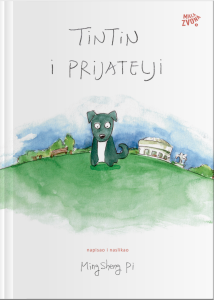2 Knjige - 30,50 €
The Fox Sings in A Lovely Way
6,64 €The first picture book written and illustrated by the young, but already renowned visual artist Ivan Tudek. His story about a harmonious world, disturbed by the intrusion of a howling bear, is told in a visual style inspired by comic books, in black and white (the picture book may also be used as coloring book).
Age: 4-6

 Safe Journey
Safe Journey  The Magic Eyeglasses
The Magic Eyeglasses 














